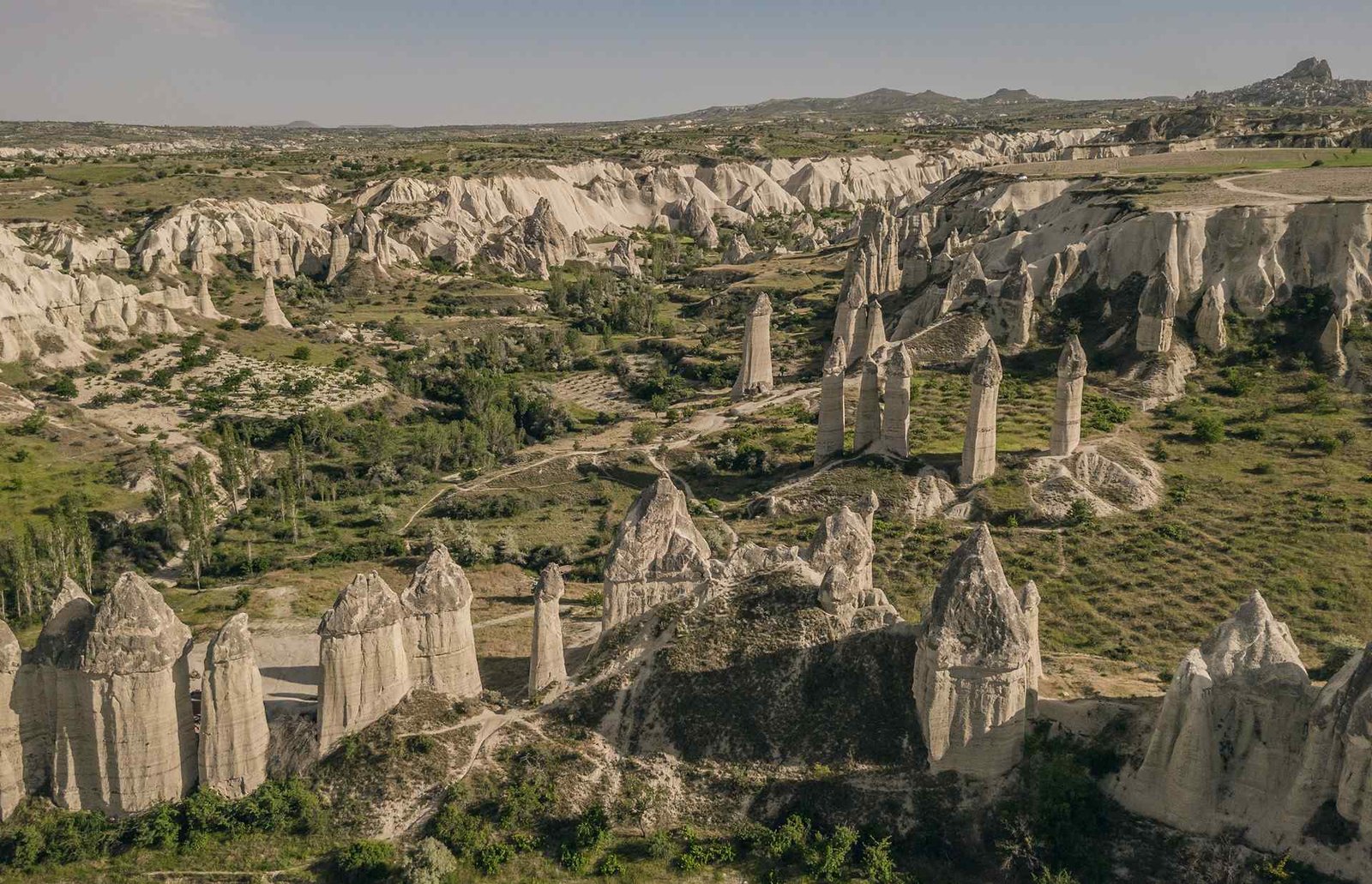Cappadocia’s landscape is famous for its incredible rock formations, with perhaps the most iconic being the fairy chimneys. These unique geological formations are a must-see for anyone visiting Cappadocia, but how were they formed?
The fairy chimneys were formed by a combination of volcanic activity, wind, and water erosion over millions of years. The volcanic ash and lava that covered the region millions of years ago have since been eroded by the elements, leaving behind the cone-shaped formations that we see today.
But the process doesn’t stop there. Over time, wind and water continued to shape the fairy chimneys, creating the distinct “hats” or mushroom-like caps that sit atop the conical bodies. These caps are made of a harder type of rock that is more resistant to erosion, which is why they are able to withstand the elements and remain intact while the softer rock around them erodes away.
But what makes the fairy chimneys even more unique is their use by the people of Cappadocia throughout history. The ancient Hittites and later the early Christians who made their homes in the caves of the region, used the fairy chimneys as shelter and even carved out entire underground cities beneath them.
Today, visitors to Cappadocia can explore these remarkable formations and even stay in hotels and cave dwellings built into them. However, it’s important to remember that these formations are delicate and should be respected and preserved. To ensure the continued existence of the fairy chimneys, visitors are urged to stick to designated trails and avoid climbing or touching the formations.
In conclusion, the fairy chimneys of Cappadocia are not only a stunning natural wonder but also a testament to the region’s fascinating history and the ingenuity of its people. By understanding how these formations were created and the importance of preserving them, visitors can fully appreciate their beauty and significance.




